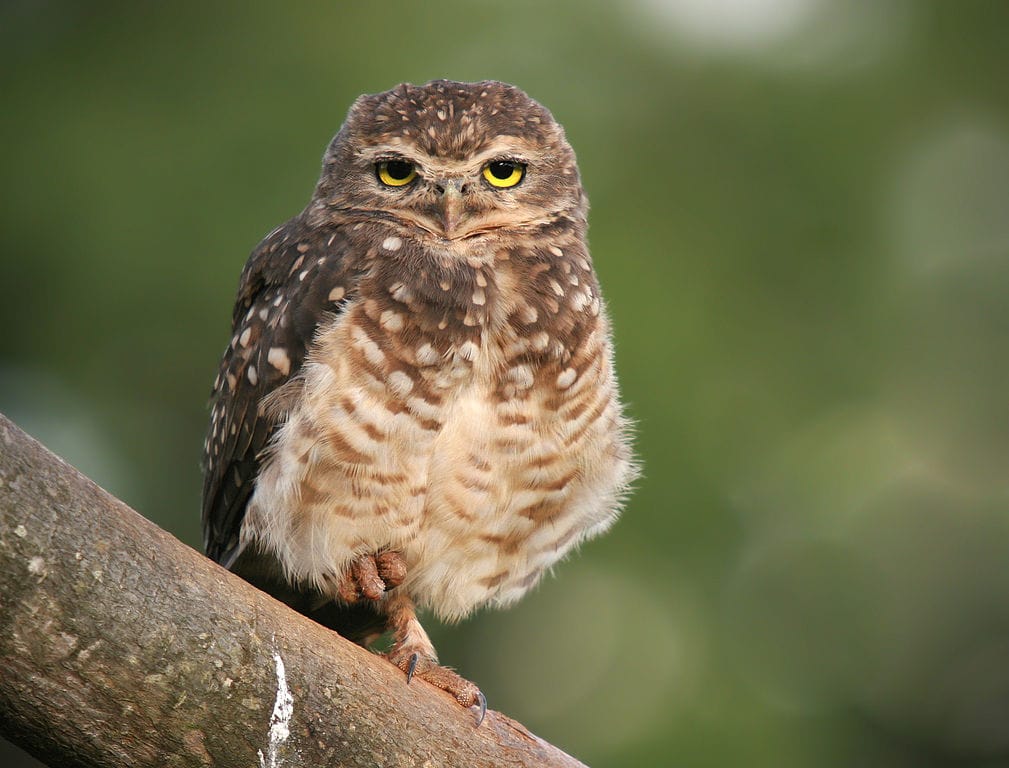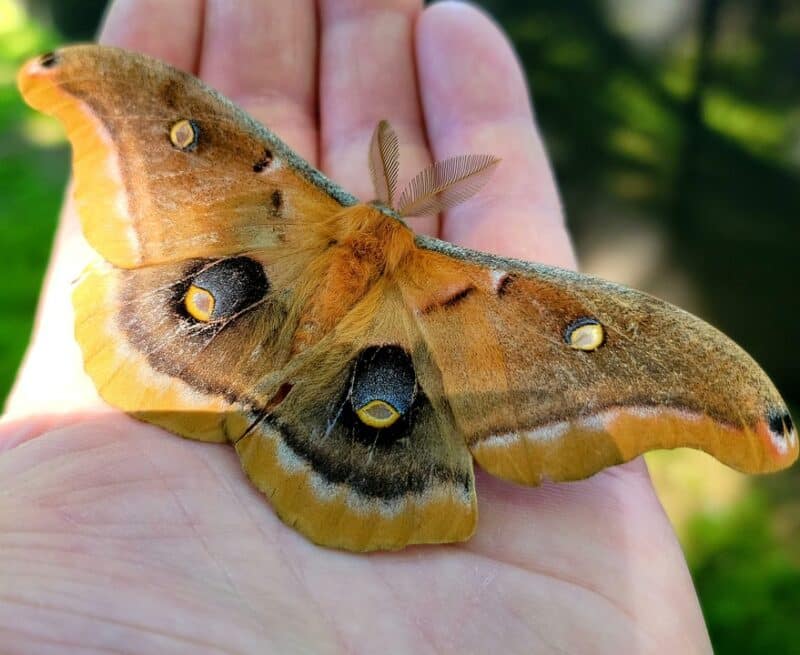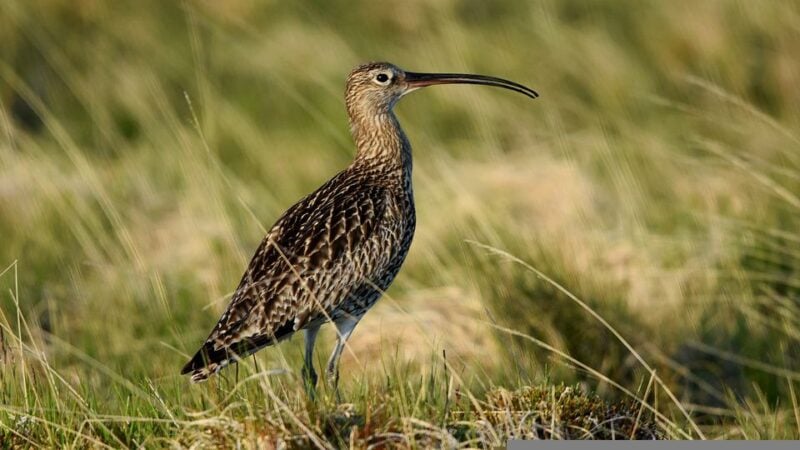Animals and wildlife in Nebraska inhabit mixed forests, wetlands, and grasslands, offering different types of habitats. About 63 species of reptiles and amphibians and 80 species of mammals – more than 400 species of birds thrive in Nebraska.
Native fishes are of about 22 types that are found in Nebraska. Rodents that are found in Nebraska are almost half of the native mammals found here. In Nebraska, carnivores are lynxes, brown bears, black bears, foxes, gray wolves, coyotes, cougars, skunks, and ferrets.
Armadillos, jackrabbits, shrews, and bats are the native animals of Nebraska state. White-tailed deer, elk, Mosse, mule deer, bison, pronghorn, and bighorn sheep are found here and there in prairie and habitats. Wild animals are found in Nebraska’s different types of diets, abundance, and habitats.
Among the native species are vulnerable, endangered, or under threat. Species that have become endangered in Nebraska are the black-footed ferret and little brown bat. A tricolored bat, which is found in Nebraska, is included in vulnerable species. American bison that is found in Nebraska is also under threat.
Click below to jump to a section on animals in Nebraska:
Burrowing Owl

Tunneling owls live in openings deserted by different creatures. They eat bugs and little rodents primarily. Tunneling owls are slim, lengthy-legged birds around 20 cm (8 inches) long. They are brown with little white spots, a white face and temples, and yellow eyes. During the day, tunneling owls might remain by the tunnel or on a post. They chase close to dawn and dusk, catching prey by running it down along the ground or dipping in from a close-by roost.
These animals in Nebraska are gone after by a wide assortment of hunters, including birds of prey, falcons, different flying predators, wild and tame canines and cats, weasels, and badgers. When drawn nearer by people, they bounce all over, probably as a method for measuring their separation from those drawing closer, and afterward fly not far off.
A few arrangements additionally consider different individuals from Athene as tunneling owls. Little owls, which live in Eurasia and northern Africa, and spotted owlets are animal types whose reach incorporates India and portions of the Middle East. Additionally, now and again, they make their homes in tunnels.
Where can one find a Burrowing owl in Nebraska?
The burrowing owl is found in dry, open, less vegetated land with burrows and an efficient food supply.
Polyphemus Moth

The polyphemus moth can be recognized from other Saturniidae by shading changes from pale to dull brown and is, sometimes, ruddy or grayish. Each of its wings has a slight scale-les” “wind”w” called an eyespot. The eyespots on its front wings are oval and surrounded by yellow. The eyespots on its back wings, with yellow, fuzzy blue, and dark boundaries, seem to be huge eyes. Its mid-region is covered with rosy earthy colored hairs.
Whenever it initially brings forth, the caterpillar is yellow. After four sheds, it arrives at a length of 8 cm or more. At this stage, the caterpillar’s body is fluorescent green and soft, with a progression of little orange spots and smooth white cross-over lines.
Caterpillar’s head is brown. When it arrives at development, the caterpillar quits eating and endures a few hours winding around a cover. The casing is appended to the host plant, and in southern locales, it might tumble to the ground. The limited silk case, frequently encompassed by dead leaves, is oval-formed and pale dim. The chrysalis spends the colder time of the year in a passive state, safeguarded inside the cover. The grown-up arises the accompanying spring.
Where can one find the Polyphemus moth in Nebraska?
They can be easily found in Nebraska in orchards, wetlands, deciduous forests, and urban areas.
Blue Catfish

The blue catfish is a significant waterway fish, leaning toward short chutes, pools with perceptible momentum, and residue-free sand, rock, and rubble substrates in Missouriit, ‘s’s most expected in the Mississippi, Missouri, and Osage waterways. It, once in a while, is found in the lower slopes of those’ more giant feeders, including the Grand, Gasconade, and Salt streams.
The blue catfish has almost vanished from the Mississippi waste upstream from the mouth of the Missouri River. Yet, populaces in other Missouri streams have all the earmarks of being steady, and dams hamper this catfish’s occasional developments upstream into the upper Mississippi River.
A populace that previously happened in the White River vanished after the Bull Shoals, and Table Rock supplies were developed. The blue catfish has been supplied in more modest impoundments around the state. However, these poor people brought about the foundation of self-supporting populaces. The blue catfish only occasionally accomplishes the high populace densities of the channel catfish, and it is less plentiful in most areas than the flathead catfish.
Blue felines utilize their delicate barbels for distinguishing food like other catfish. Blue catfish feed generally on or close to the base and, less significantly, in midwater. They eat various creature life, including fishes, youthful oceanic bugs, crawfish, fingernail mollusks, and freshwater mussels.
A blue feline as little as four creeps long may eat some fish. However, most of the eating regimen of more modest blue catfish is made out of little spineless creatures. Blue catfish bigger than 8-13 inches eat, for the most part, fish and more enormous frail creatures.
Where can one find Blue Catfish in Nebraska?
Blue catfish are found both coastal and inland.
Eskimo Curlew

There are eight species. Curlews are streaked, dark, or earthy-colored birds with long necks and genuinely lengthy legs. They breed inland in calm and sub-Arctic districts of the Northern Hemisphere and relocate far south.
During relocation, they regularly dry uplands, feeding on bugs and seeds; wintering birds possess swamps and beachfront mud pads, where they test for worms and fiddler crabs. There are eight species, and these animals in Nebraska are streaked, dark, or earthy-colored birds with long necks and genuinely lengthy legs.
They breed inland in calm and sub-Arctic districts of the Northern Hemisphere and relocate far south. During relocation, they regularly dry uplands, feeding on bugs and seeds; wintering birds possess bogs and waterfront mud pads, where they test for worms and fiddler crabs.
Where can one find Eskimo curlew in Nebraska?
Eskimo curlew is found mostly living in open grasslands in Nebraska.
Piping Plover

The funneling plover is a little, sparrow-sized shorebird. They are around five to seven creeps long, with a sandy brown color on its back and white on its underside. They have dark or earthy colored neckbands, dark tail tips, white “eyebrows,” a dark bar across its brow, yellow-orange legs and feet, and a little, thickset orange bill with a dark tip.
Guys and females are comparable by all accounts, yet the male is somewhat more prominent, and its bill’s foundation is a more splendid orange during the rearing season. The funneling plover gets its name from the channeling sound of its call. Funneling plovers eat marine worms, fly hatchlings, bugs, shellfish, mollusks, and other little spineless creatures.
Whenever it spots its prey, it rapidly pursues it, stops abruptly, and then rapidly grabs it up. The channeling plover returns to its suitable place in late March or early April. The male channeling plover courts the female by flying over her and plunging near the ground. The male chooses the home site and protects it from different plovers.
He then, at that point, begins scratching a home in the sand over the elevated tide line. Both the male and female might throw stones and shell parts into the downturn. The female funneling plover, as a rule, lays four eggs. The eggs hatch in around 25 days, and the chicks fledge when they are three to about a month old.
The guardians don’t take care of the chicks, and they jump out of the home and search for food themselves. Assuming the youth is compromised by a hunter, the grown-up may claim to have a messed-up wing to draw the hunter away!
Channeling plovers and their eggs mix in very well with the sand, an excellent disguise for hunters, yet it can seriously endanger them from being stepped on by people. In certain areas, the funneling plover is endangered.
The spread of human improvements in the seaside and lakeshore regions has upset or obliterated the settling site of the channeling plover.
Where can one find Piping plover in Nebraska?
It can be found in dry, sandy areas and on the coast of sandy beaches in Nebraska.
Jumping Mouse

Hopping mice weigh 13 to 26 grams and are 8 to 11 cm long, excluding the insufficiently-haired tail, which is longer than the body. Their reflexive fur is delicate or somewhat coarse; shading is three-sided: brown on top from nose to backside, grayish to rust-hued on the sides, and white on the underparts. The tail is earthy colored above and white underneath.
Hopping mice regularly run on every one of the four legs or skip along in a progression of short bounces. However, when frightened, they jump capably yet whimsically up to 4 meters, utilizing their lopsidedly lengthy rear legs, and the thin tail adjusts them. For the most part, earthbound, these rodents are likewise nimble bush climbers and astounding swimmers.
Their round homes are developed of vegetation and are found in deserted tunnels of different creatures, on the ground underneath logs or heavy brush, and occasionally in low bushes and trees. Hopping mice eat a diverse diet of growths, natural products, seeds, spineless creatures, and periodically mollusks and little fish.
The forest-bouncing mouse lives in the wet backwoods of eastern North America. The meadow, Pacific, and western hopping mice range over quite a bit of North America, in prairies and riverine and wet knoll living spaces of cool and damp woodlands. The main species found external North America is the Sichuan hopping mouse, which occupies southern China’s cool and wet mountain timberlands.
Where can one find Jumping mice in Nebraska?
It can be found in less woody areas and prefers sandy, crumbly soil.
Sandhill Crane

Perhaps the most remarkable standard peculiarity in the United States is the sandhill cranes’ yearly assemblies. For about a month each March, more than 500,000 sandhill cranes merge on the Platte River bowl in Nebraska to rest and eat before they finish their relocation to their clear northern places. The birds eat corn from the grain fields and relax on the shoals afterward.
Time on the Platte River additionally allows single sandhill cranes to track down mates. Sandhill cranes are enormous birds with long, flimsy legs and necks. The bird’s cheeks are white, and its brow has a radiant red fix, one of the bird’s most visual elements. Sandhill cranes have, for the most part, grayish plumes, yet the shade of dim can shift broadly.
Albeit the quills are dark, once in a while, they can have a rosy earthy-colored appearance. This is because anes dress by scouring mud on their quills and soil from iron-rich conditions is often roftenll cranes around three to four feet tall with a wingspan that can be more than five feet.
Sandhill cranes are pioneering feeders. They will change their eating routine given what’s accessible. They most frequently eat plants and grains, yet dine spineless creatures or even little warm-blooded animals, creatures of land and water, and reptiles.
Sandhill cranes, mate, forever. It can keep going for a long time whenever they structure a couple of bonds until one of the cranes bites the dust. After a mate dies, the enduring crane will search out another mate. In the late winter, as sandhill cranes move to their good places, single cranes will fire, bringing them together. The most intense and observable call a sandhill crane makes is during the mating season.
These animals in Nebraska will perform harmony calling to make a bond, regardless of their sex. During mating, sandhill cranes perform moving presentations. Although moving is most expected during rearing, the cranes can move the entire year.
At times the dance includes wing-fluttering, bowing, and hopping. They could likewise toss a stick or a few plants high up. Whenever the pair arrives at clear northern places, they mate and construct a home. Cranes create a ground home out of plant materials, and they frequently have two eggs.
The pair will deal with the home along with the male standing watchman. It requires about a month for the eggs to incubate and more than two months for the chicks to be free. In the fall, the adolescent sandhill cranes move south with their folks. Following two years, the teenage cranes arrive at sexual development and start the inquiry to track down their mates. Sandhill cranes in the wild have a more prominent possibility of biting the dust youthful, yet these cranes can live for a considerable time or more.
Where can one find a Sandhill crane in Nebraska?
They are mostly found to be living in wetlands and grasslands.
Summary of Animals in Nebraska
In Nebraska, there are around 63 types of reptiles and creatures of land and water, and 80 types of warm-blooded animals. Over 400 types of birds flourish in Nebraska. Local fishes of 22 different kinds are found in Nebraska.
If you enjoyed animals in Nebraska, check out animals in Oklahoma and North Carolina next!
Join our Forum for free today!

- These are The 5 Largest Great White Sharks Ever Recorded - July 19, 2024
- The Surprising Benefits of Big Game Hunting - July 18, 2024
- $100k+ Hunting Experiences The Most Expensive Animals to Pursue - July 17, 2024


